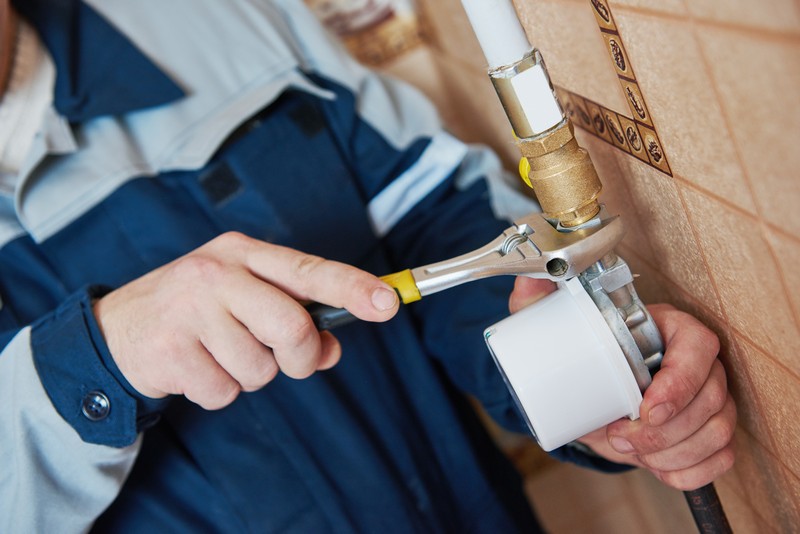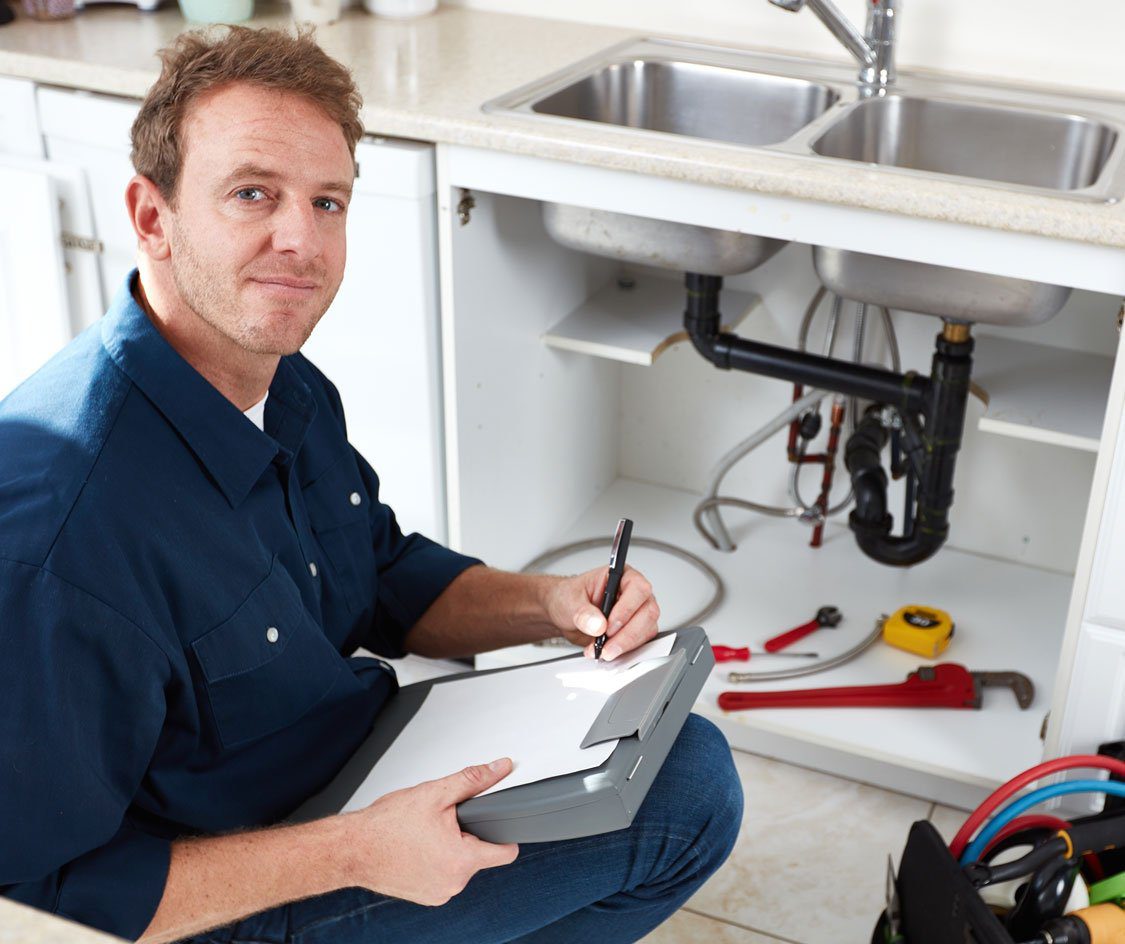Professional Tips for Utilizing Revolutionary Plumbing Solutions in Modern Homes
Professional Tips for Utilizing Revolutionary Plumbing Solutions in Modern Homes
Blog Article
Nearly everybody has their own unique perception in relation to Innovative Plumbing Solutions for Sustainable Housing.

Introduction
In today's modern-day homes, plumbing solutions are evolving to meet the demands of performance, sustainability, and convenience. From clever leak discovery systems to energy-efficient components, house owners currently have a broad variety of cutting-edge choices to pick from.
Remote-Controlled Plumbing Solutions
Remote-controlled plumbing systems permit home owners to keep track of and regulate their plumbing fixtures from anywhere utilizing a smart device or tablet computer. From changing water temperature level to spotting leakages, these systems offer benefit and comfort.
Smart Leak Discovery Systems
One of the most considerable innovations in plumbing technology is the growth of smart leak detection systems. These systems make use of sensors and formulas to identify leakages early, protecting against water damage and conserving house owners from pricey repairs.
Greywater Recycling Systems
Greywater recycling systems gather and deal with wastewater from sinks, showers, and washing home appliances for reuse in irrigation and various other non-potable applications. By recycling greywater, house owners can lower water usage and add to lasting living practices.
Solar Water Home Heating Solutions
Solar water furnace harness the power of the sunlight to heat water for domestic use. By mounting solar collectors on the roofing, property owners can lower their dependence on standard hot water heater and lower their energy bills while lowering their carbon impact.
Hydronic Home Heating Solutions
Hydronic heating systems use water to disperse warm throughout a home, offering reliable and comfortable warmth throughout the colder months. These systems can be powered by numerous energy resources, including gas central heating boilers, heat pumps, and solar thermal enthusiasts.
Water-Efficient Landscaping
Creating water-efficient landscapes is an additional pattern in modern-day plumbing. By choosing drought-resistant plants, setting up absorptive hardscapes, and incorporating rainwater harvesting systems, home owners can minimize water usage while preserving a gorgeous and sustainable outside room.
Smart Watering Equipments
Smart irrigation systems use sensing units and climate data to maximize watering schedules and decrease water waste. These systems can change sprinkling times based upon soil wetness levels, rains projections, and plant requirements, guaranteeing effective water use for outside landscaping.
Pipe Relining and Trenchless Repair Work
Conventional pipe fixing techniques commonly include digging trenches and interfering with
High-Efficiency Fixtures and Equipments
Another fad in contemporary plumbing is the use of high-efficiency components and appliances. From low-flow bathrooms to water-saving dishwashers, these components and appliances are created to minimize water usage without giving up performance.
Tankless Hot Water Heater
Tankless hot water heater are ending up being significantly popular in contemporary homes as a result of their energy effectiveness and on-demand warm water distribution. Unlike traditional water heaters, tankless designs warm water as it travels through the device, removing the demand for a huge tank.
Anti-Scald Taps and Showerheads
Anti-scald taps and showerheads are designed to stop burns and injuries by managing water temperature level and flow. These components feature built-in thermostatic valves that maintain a constant temperature level, even if there are changes in water pressure.
Motion-Activated Taps
Motion-activated faucets are a hassle-free and sanitary alternative for modern bathroom and kitchens. By finding activity, these faucets automatically activate and off, minimizing the spread of germs and preserving water.
Water Filtering and Filtration Solutions
Guaranteeing clean and secure drinking water is crucial for contemporary home owners. Water filtration and filtration systems get rid of impurities and pollutants, giving assurance and enhancing total health and well-being.
Final thought
Ingenious plumbing solutions offer property owners the chance to enhance performance, sustainability, and ease in their homes. From clever leakage discovery systems to solar water furnace, these innovations are changing the means we consider plumbing and water administration.
Innovative Plumbing Trends Transforming Construction
Heading Towards Eco-Friendly
Environmental responsibility has become a top priority across industries as climate change concerns mount. For construction, sustainable plumbing aims for dramatically reduced consumption and emissions cuts.
Water conservation fixtures like low-flow dual flush toilets, WaterSense labeled sensor faucets and low flow showerheads are now common choices for new builds and remodeling. Installing these fixtures slashes indoor water usage by 35% or more without compromising performance.
Heat pump water heaters provide over 3x efficiency gains versus traditional models by using air heat for water warming instead of gas or electric power. Solar water heating systems take this concept further by harnessing the sun’s energy free of charge for substantial long term savings. With eco-products advancing at a rapid pace, plumbing projects integrating green technologies satisfy both environmental and economic goals.
Smart Fixture Revolution
Home automation now extends to plumbing systems via smart fixtures controllable from smartphones and voice assistants. Touchless infrared sensor faucets auto-dispense measured water amounts, while digital showers allow custom temperature and pressure settings per user that sync via wifi. Smart toilets provide maintenance alerts for descaling or leaks prevention while conserving water through precision flushes.
These convenient innovations enable both homeowners and plumbers to monitor usage, alerts and operations remotely while customizing experiences. Specifying or installing smart fixtures and piping prepared for automation ensures constructions stay future-ready as consumer IoT adoption grows.
Digital Plumbing Evolution
Digital modeling is transforming coordination across construction disciplines. Plumbers can now integrate precise 3D plumbing visualizations with HVAC, electrical and architectural layouts on unified Building Information Modeling (BIM) software well before installation. This virtual design and clash detection results in huge time and cost savings by identifying pain points early when changes are cheaper.
BIM also enables advanced analysis for the best pipe sizing, space allocation and system performance factors using real project data. Cloud collaboration allows all teams and trades to ensure full constructability is achieved before proceeding to construction when modifications become exponentially more expensive. To leverage these efficiencies, managers should consult plumbers skilled in digital modeling techniques as well as physical installations.
Touchless and Convenient
In a post-pandemic world focused on health and safety, touchless plumbing fixtures provide hygienic operation without compromising usability. Automated sensor-activated faucets, toilets and showers run when detecting motion within range then shut off to prevent waste and limit cross contamination from handles.
These hands-free fixtures are critical in hospitals and public places especially where frequent sanitization is impractical. Even homes can benefit from touchless fixtures in high traffic areas like guest bathrooms.
Specifying copper alloy finishes like brass, nickel and bronze on new touchless faucets also helps eliminate bacteria from surfaces between cleanings for further protection. With automated conveniences and potent germ resistance, touchless plumbing promotes wellness and accessibility. Their affordability continues improving to drive mass adoption in coming years.
Using Recycled Water
Global freshwater shortages make water conservation and reuse systems a growing plumbing sector. Greywater recycling collects used household water from sinks, showers, appliances to filter and purify for landscape irrigation or flushing uses. Studies by Bath University’s WSRC show bathing and laundry greywater can offset over half of toilet flushing needs.
Constructing wetland filtration gardens using nature-based water treatment methods is an ecological greywater solution. Plumbers may also install subsurface drip irrigation delivery to precisely nourish plant roots.
While regulations vary currently, the US Green Building Council has introduced credits for non-potable water utilization in its rating system. Specifying recycling systems hedge against future constraints while showcasing sustainability.
Tankless Water Heaters Influence
Also termed instant or demand-style heaters, tankless models represent the future for sustainable hot water systems. Avoiding standby energy losses from traditionally fired storage tanks, tankless units utilize advanced heat exchangers that only activate flow when needed.
This on-demand design allows right-sized compact units exceeding 97% efficiency even for single faucets. Endless hot water output potential from tankless models enables adding fixture points without capacity concerns.
Going tankless reduces carbon emissions over 4 tons annually for a typical home. With energy ratings that exceed Energy Star benchmarks, tankless systems earn rebates and tax credits offsetting nearly 30% of costs too.
Growth in PEX Piping
Crosslinked polyethylene or PEX is the undisputed rising plumbing star thanks to installation, performance and longevity benefits beyond copper. Flexible PEX tubing simplifies retrofits in finished walls and enables long single-piece pipe runs up to 300 feet. Resilience against heat, chlorine and chemicals reduces corrosion and buildup too. With fewer joints than rigid piping, leakage risks are also mitigated.
Evaluating total lifetime cost beyond upfront price shows why PEX leads on economics too. Faster installation with 61% lower labor inputs slashes project charges. Frost and chemical resistance provide decades of reliable service life without repairs expected each decade from copper. As PEX quality improves and costs drop further, its current 45% market share lead over copper will only expand.
3D Pipe Printing Technology
Additive manufacturing known as 3D printing already accelerates production across industries using specialized materials from plastics to metals. In construction, onsite robots extrude molten polymer feedstocks into fully formed plumbing pipes and fittings with precision reckoning and positioning.
This agile digital technique minimizes joints by printing any required shape already connected. It also reduces offcuts and need for welding, glue or grinding during installation.
For disaster recovery and remote worksites, portable 3D printing enables quick deployment from mobile printer equipment. 3D printing’s design freedom, logistics flexibility and joint reduction will see rapid plumbing adoption once productivity scales to demand.
Nanotechnology in Plumbing
At the microscopic scale, innovations from nanotechnology aim to eliminate bacteria spread while preventing buildup scale on fixtures. Titanium dioxide and zinc oxide nano-coatings applied to fixture surfaces neutralize pathogens using oxidation and metal ion bursts. Once regarded skeptically, EPA now confirms successfully university trial results.
Without altering visual appearance, nano-layers also dramatically slow mineral scale accretion by smoothing surface roughness that accelerates grime adhesion at 10,000x magnification. Ongoing nano-coatings development focuses on improving durability and activation triggers using external light, humidity or mechanical stimulation.
Specifying nano-protected fittings enhances infection control assurance, reducing reliance on risky contaminated wipes while cutting cleaning costs over $150 yearly per faucet. With built-in antimicrobial product regulations now introduced in the US and UK, nanotechnology adoption is projected to grow by 400% in plumbing systems within this decade.
Labor Efficiency Techniques
To remain competitive in today’s fast-paced construction environment, contractors such as these are adopting labor efficiency techniques such as pre-fabrication of pipe sections offsite or using flexible PEX tubing that is faster and easier to install.
These techniques greatly reduce the time spent on site by workers thus cutting down on labor costs dramatically; an advantage that directly translates to lower costs for the clients and more profitable operations for construction companies.
https://constrofacilitator.com/innovative-plumbing-trends-transforming-construction/

Hopefully you liked our excerpt on Top 5 Innovations in Plumbing Technology. Thanks a ton for spending some time to read our article post. Sharing is caring. Helping others is fun. Thanks for going through it.
Call Report this page